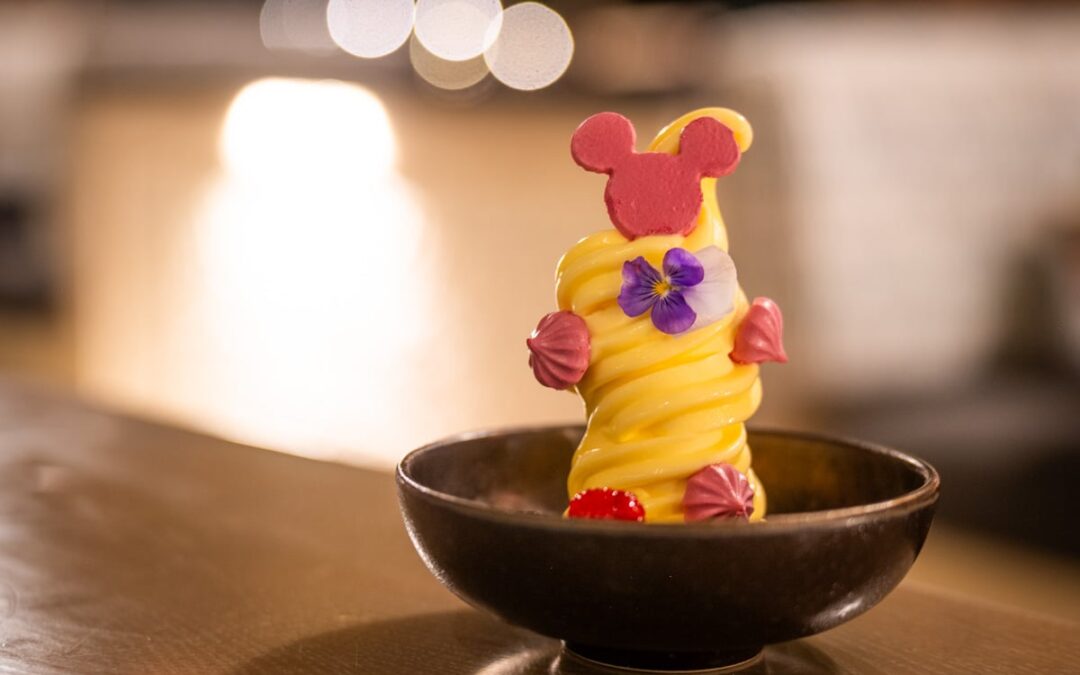

The Disney Dining Plan comes in tiers, with prices starting at $59 per night for adults and $25 for kids. This guide to Walt Disney World’s meal package covers costs, money saving tips, what’s included, our review of whether the DDP is worth it, and likelihood of Free Dining returning again. (Updated August 3, 2025.)
Let’s start with the current status of the Disney Dining Plan for 2025 and 2026. The Quick-Service Disney Dining Plan (QSDDP) and standard or regular Disney Dining Plan (DDP) are now available to both book and use at Walt Disney World. The Deluxe Disney Dining Plan (DxDDP) and Disney Dining Plan Plus (DDP+) remain unavailable, and there’s a good chance they’ll never return.
But wait, there’s more! When it comes to the Disney Dining Plan, the next question is inevitably: “When is Free Dining available?” The answer to that is not currently. Bookings for the 2025 Free Dining dates have already ended, and it’s unlikely there will be another set of dates this year. If history repeats itself, we can expect Free Dining in 2026, likely towards the beginning of the year. If you’d like to be notified if/when it’s released again or we have more details, sign up here for our FREE Disney newsletter here.
In terms of other updates, there are also 2026 Disney Dining Plan Price Increases & Decreases. The changes for adults are minor and around the rate of inflation. Menu prices are likely to increase in October by similar amounts, meaning the value proposition of the DDP won’t really change for adults in 2026. If anything, the Disney Dining Plan will be slightly better by comparison given the menu price hikes. All of this applies only to adults–or rather, Disney Adults (anyone ages 10 and up).
Then there’s the biggest change with the 2026 Disney Dining Plan, which is that Kids Eat FREE All Year in 2026 at Walt Disney World! Throughout all of 2026, guests staying at one of Walt Disney World’s more than 25 on-site Disney-owned resort hotels will get a FREE Disney Dining Plan for their kids (ages 3 to 9 at the time of travel) when purchasing a Disney Dining Plan as part of their package for the other members of their party (ages 10 and up at the time of travel).
The Free Disney Dining Plan included in this special offer depends on the Disney Dining Plan the adults in the party purchase. The Disney Dining Plan is included for kids ages 3-9 when purchasing a regular Disney Dining Plan for guests ages 10 and older in the party. The Quick-Service Disney Dining Plan is included for kids ages 3-9 when purchasing a Quick-Service Disney Dining Plan for Guests ages 10 and older in the party.
The Kids Free Dining Plan at Walt Disney World deal can be combined with other select special offers, meaning you may still be eligible to take advantage of other deals released later for 2026. General public discounts have yet to be released for any 2026 travel dates–and probably won’t until around October of this year–so we’ve yet to see what “other select special offers” are eligible.


As a result of the Free Kids Disney Dining Plan, the 2026 per night pricing for the DDPs is as follows:
- Quick Service Disney Dining Plan: $60.47 per adult and $0 per child
- Disney Dining Plan (standard): $98.59 per adult and $0 per child
For reference, here are 2025 Disney Dining Plan prices:
- Quick Service Disney Dining Plan: $59.14 per adult and $24.71 per child
- Disney Dining Plan (standard): $97.79 per adult and $30.56 per child
Accordingly, here are the price increases and decreases for the 2026 Disney Dining Plan:
- Quick Service Disney Dining Plan: +$1.33 per adult and -$24.71 per child
- Disney Dining Plan (standard): +$0.80 per adult and -$30.56 per child
Obviously, the negative numbers for kids are what’s eye-catching. This makes the Disney Dining Plan much more attractive for families with children who are in the ‘sweet spot’ age, which is a savvy move on Walt Disney World’s part, as guest interest in the DDP had been declining for a few years. This will reverse that trend. It’ll also make discussion of the value proposition difficult, since it hinges on how many kids ages 3 to 9 years old are in your party.


Aside from the Free Kids Disney Dining Plan, there are no material differences with the 2026 Disney Dining Plan. The most significant substantive change that’s still relevant is the inclusion of alcoholic beverages on all tiers of the Disney Dining Plans, which happened several years ago. This is a nice perk for drinkers, but has downsides–particularly for families, as kids obviously cannot order alcohol.
Additionally, Walt Disney World reduced the number of snacks available on the Disney Dining Plans from 2 to 1 per night. So that alone achieves cost-savings for the company and reduces the per night value by $5-6. Both of the above changes occurred previously–these are not new changes for the 2025-2026 Disney Dining Plan.
Walt Disney World is also engaging in aggressive culinary cost-cutting, especially at counter service restaurants. They’ve substituted suppliers, changed ingredients, and reduced portion sizes. This is across-the-board and not unique to the Disney Dining Plan–you’ll experience it whether you use the DDP or not. Regardless, the Disney Dining Plan will offer less food than before–or you’ll have to spend more to get as much.
Here’s everything else you need to know about the 2025-2026 Disney Dining Plan…
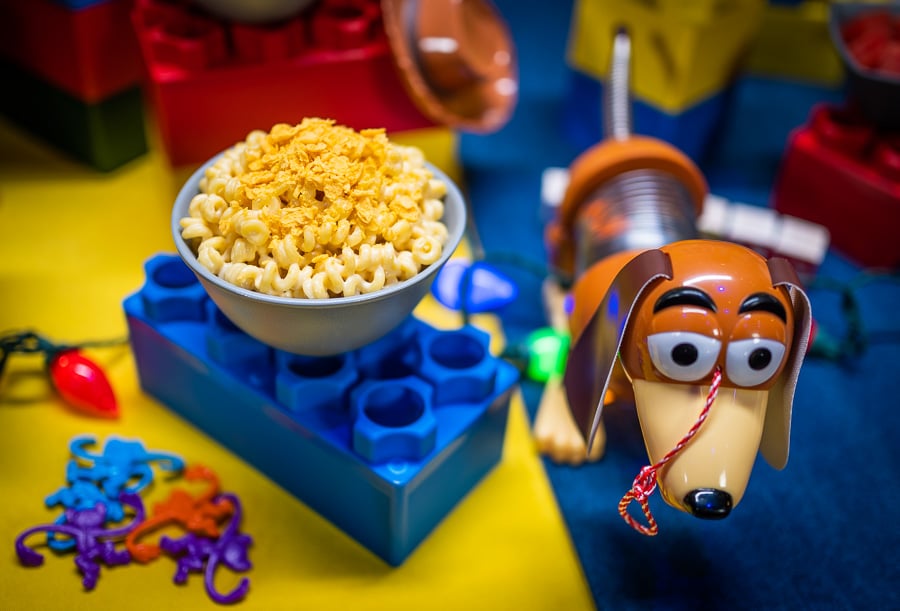

We’ve used each tier of the Disney Dining Plan numerous times, usually multiple times per year. Our tips and opinions are based on our first-hand experience with the Dining Plan every year (minus the 3 it hasn’t been available) since 2007. Equally as important, we have not used the Disney Dining Plan many, many more times than we have used it.
That may not seem important, but it is. In researching Walt Disney World, you’ll learn that there are diehard Dining Plan fans, and others who hate it with the fiery passion of one thousand suns. Both groups have their biases, and often make sweeping generalizations about the Disney Dining Plan based on how well it works–or doesn’t–for them.
Seriously, Walt Disney World fans have a lot of surprisingly strong opinions about things that might seem silly to the average person. But few subjects are as irrationally polarizing as the Disney Dining Plan. Even ~15 years after its debut, we still don’t totally “get” that. We see the DDP’s pros and cons, and recognize that it’s great for some families and awful for others. In short, the Disney Dining Plan is very much not one-size-fits-all, and this post reflects that reality!
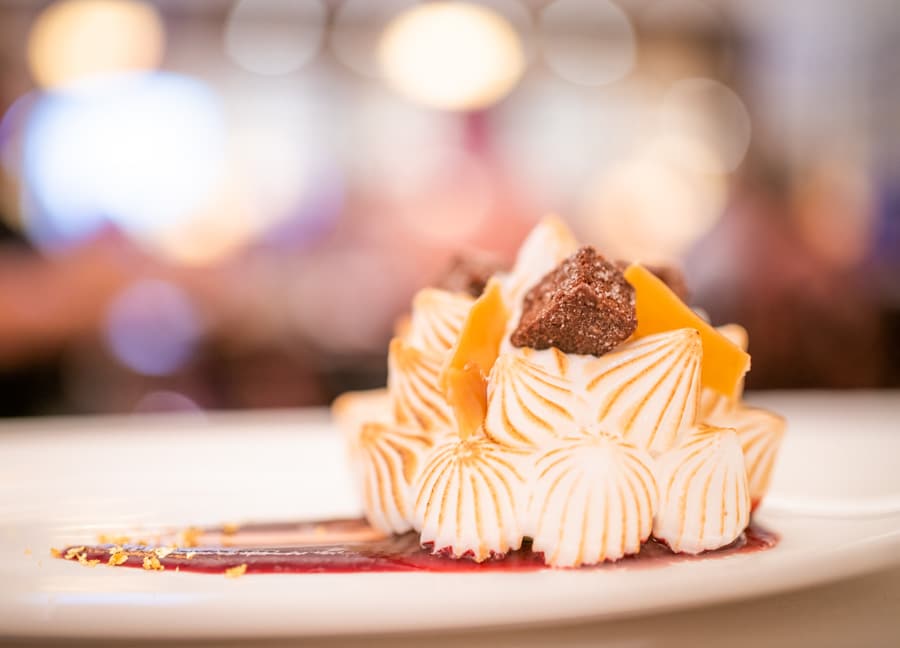

Before we get to dollars and cents, let’s cover some basics. The DDP is a prepaid meal plan offered at Walt Disney World so guests can budget their dining costs in advance and (potentially) save money. It provides guests with credits that can be redeemed for snacks, counter service meals, table service meals, or fine dining meals.
Gratuity is not included on the Disney Dining Plan, meaning guests need to pay that out of pocket. This is one way that the Disney Dining Plan actually catches people by surprise–even during Free Dining or when paid for in advance, tips can add up and be a considerable and sometimes unanticipated expense at the end of the trip. Otherwise, it’s a fairly all-inclusive meal plan, albeit with some limitations.
Disney Dining Plan credits are stored on the guest’s MagicBand or Key to the World card, with the receipt provided after redeeming the credits indicating how many credits remain. That’s the old school way of knowing how many credits you have remaining.
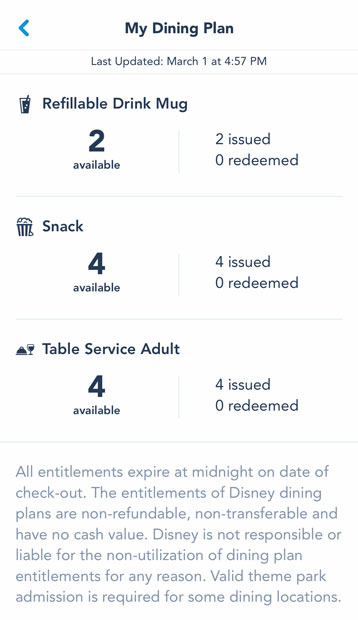

We recommend monitoring your Disney Dining Plan usage–including credits issued and redeemed–via the My Disney Experience app. Within the app, you’ll want to navigate to “Resort Hotel” (either from the home screen or the tiles) and then “Check Dining Plan.” That’ll take you to the screen above, showing you how many credits issued and remaining.
For counter service restaurants, we highly recommend using the Mobile Order feature in the My Disney Experience app to redeem your credits, too. This is because the process is even more streamlined now, with a little pop-up ‘reminder’ indicating when you’re not fully utilizing the DDP and would be letting credits go to waste.
You can still use the Disney Dining Plan at counter service cash registers, and it’s often helpful to go this route if you have questions that a Cast Member can answer. And they also can help make sure you’re taking full advantage of your DDP credits. Of course, this is how you’ll also do things at table service restaurants–tell your server you have the Disney Dining Plan before ordering, and they’ll make sure you’re using your entitlements properly.
![]()
![]()
Walt Disney World has released the Full List of Restaurants on 2025 Disney Dining Plans.
The big restaurants that are missing from the 2025 Disney Dining Plan are Space 220 and California Grill. The commonality is that both locations are immensely popular and both serve prix fixe menus. If either of those things change (popularity or menu types), we’d expect to see them added. Both would likely be 2-credit Signature Restaurants, making them poor uses of credits. There are also a handful of third party restaurants that don’t accept the 2025 Disney Dining Plan.
In addition to this, many menus at Walt Disney World (especially counter service restaurants) are still scaled-back, but we’ve already seen a few receive refreshes in the last couple of months. Even so, not everything on every menu is eligible for the DDP. You’ll need to look for the symbol (see below).
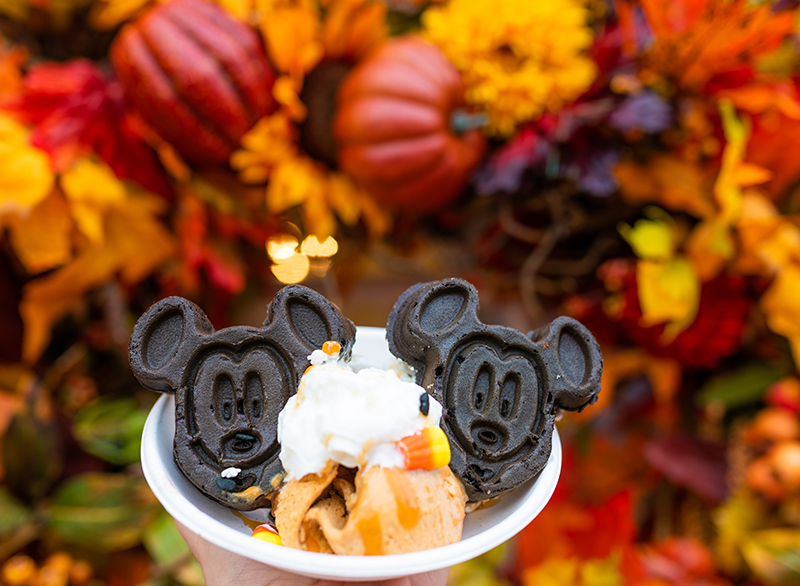

Walt Disney World guests purchasing a vacation package with a room and tickets through Disney are eligible to buy the Disney Dining Plan. This means that if you want the DDP, you cannot save money by staying in off-site hotel or by purchasing discount Walt Disney World tickets through a Disney-authorized ticket seller.
Disney Vacation Club members staying on points are also eligible to add-on the Disney Dining Plan, without the purchase of park tickets through Disney (as many of them either have Annual Passes or prefer purchasing discounted tickets through authorized third parties). You can also add-on the Disney Dining Plan when renting DVC points, which is a great way to save money on accommodations.
Let’s get more into the nitty-gritty of the Disney Dining Plan, starting with the basics: prices and what each plan includes…
Disney Dining Plan Overview
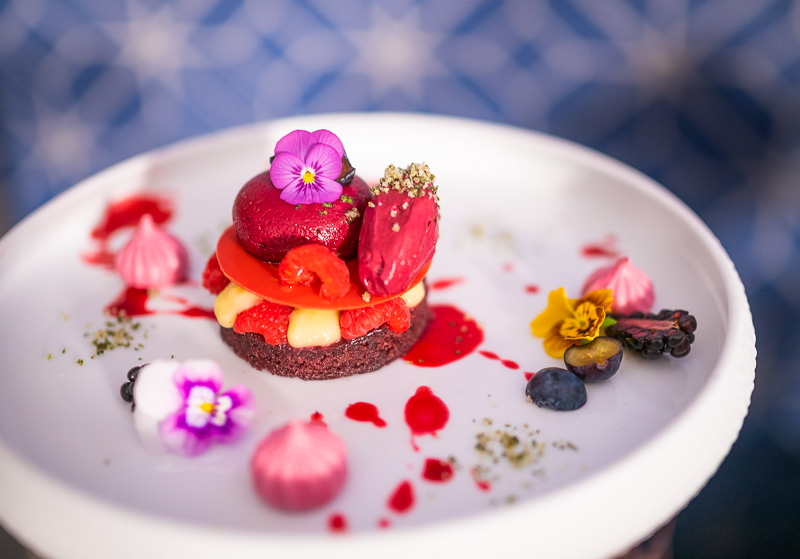

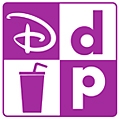
 For the purposes of the Disney Dining Plan, a “counter service meal” consists of a combo meal (entree plus side) and beverage, including alcoholic beverages for adults (where available). It no longer includes a dessert.
For the purposes of the Disney Dining Plan, a “counter service meal” consists of a combo meal (entree plus side) and beverage, including alcoholic beverages for adults (where available). It no longer includes a dessert.
A “table service meal” consists of an entree, dessert, and beverage, including alcoholic beverages for adults. For those guests on the Deluxe Disney Dining Plan (still unavailable), this also includes an appetizer.
As part of Walt Disney World’s healthy living initiative, the dessert in the table service meal may also be substituted for a side salad, cup of soup, or fruit plate.
A “snack” includes items sold at snack carts around the park or in quick service restaurants. The definition of a snack has been expanded to include any single serving side item, which means more items will now be considered snacks (snacks were previously determined on a case-by-case basis with the DDP symbol (the purple icon above) denoting what was a snack). A snack now includes every side item, hand-scooped ice cream, and many other items that previously did not qualify as snacks.
Tax is always included, but guests pay for tips out of pocket. Children under 3 eat free from an adult’s plate.


Quick Service Disney Dining Plan
The Quick-Service Disney Dining Plan is the lowest tier of the DDP. This is the tier that is typically included with Free Dining at the Value and Moderate Resorts.
For each person on the room reservation, the Quick Service Disney Dining Plan includes:
- two counter-service meals (per night)
- one snack (per night)
- a refillable drink mug (per stay)
For 2025, the per night price of the Quick Service Disney Dining Plan is $59.14 per adult and $24.71 per child. (For comparison, it was previously $57.01 per adult and $23.83 per child.)
For 2026, the per night cost of the Quick Service Disney Dining Plan is $60.47 per adult and $0 per child. Again, that’s a minor bump on the adult side under the rate of inflation, and a massive drop for kids. Huge win for families, and not really a loss for adults without kids given that menu prices will probably increase by more.
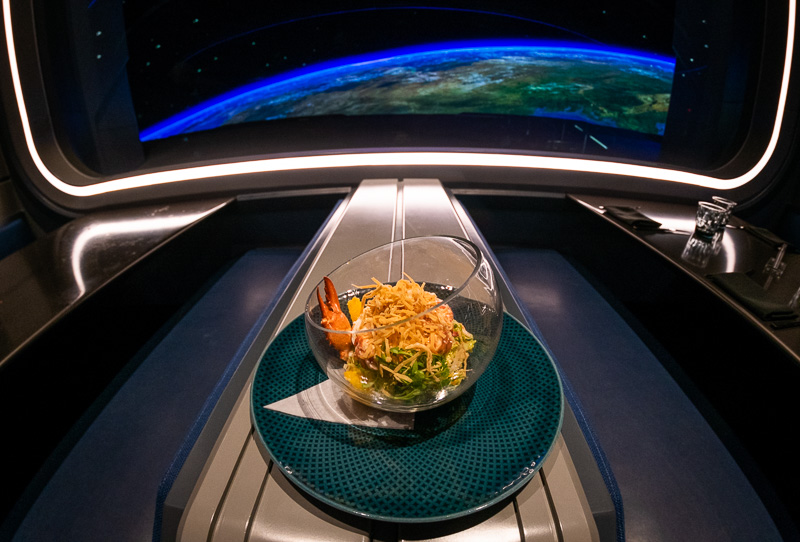

Standard Disney Dining Plan
This is the standard tier of the Disney Dining Plan, and what’s typically included with “Free” Dining at the Deluxe and Deluxe Villa Resorts. For the price difference between the plans, you can upgrade from the Free Quick Service Dining Plan to this plan at the Value Resorts.
For each person on the room reservation, the Standard DDP includes:
- one counter-service meal (per night)
- one sit-down meal (per night)
- one snack (per night)
- a refillable drink mug (per stay)
For 2025, the per night price of the standard or regular Disney Dining Plan is $97.79 per adult and $30.56 per child. That’s up from $94.28 per adult and $29.69 per child.
For 2026, the standard Disney Dining Plan costs $98.59 per adult and $0 per child, per night. It’s worth noting here that the regular DDP skyrocketed by $16 a few years ago, up from $78 per adult. That sharp spike resulted in a precipitous drop in demand, which is likely what led to the Free Kids Disney Dining Plan for 2026. In the end, this will work out favorably for families with kids, especially once you account for inflation.
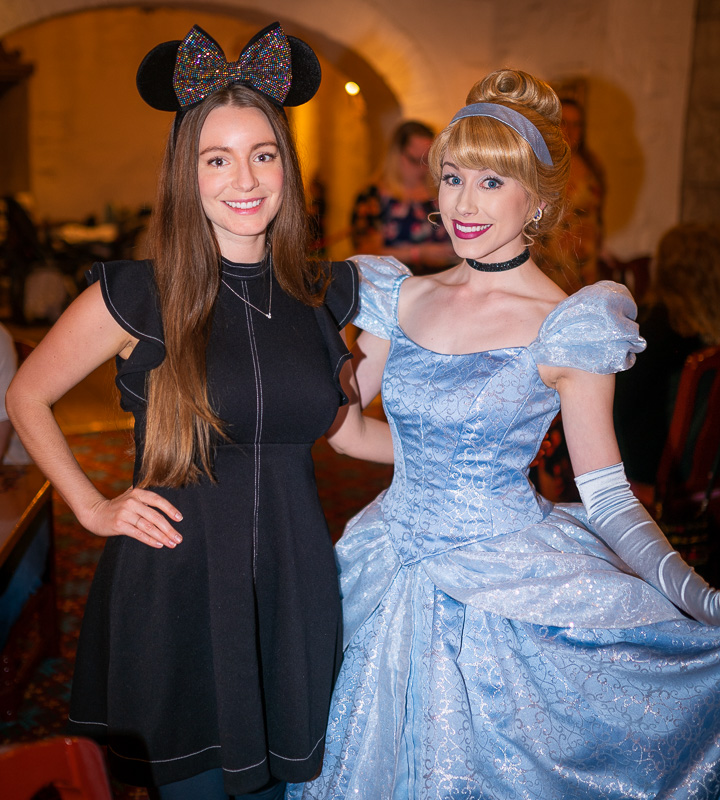

Two-Credit Table Service Restaurants – Some dining experiences at Walt Disney World require 2 credits rather than just a single credit. By and large, these are premium offerings, such as Signature Restaurants, Dinner Shows, Pizza Delivery, or Room Service Meal.
In terms of value for money (or credit), there is not a single 2-credit premium experience that’s worth it from an objective perspective on the regular Disney Dining Plan. None of them–not one–offers per-credit value that’s on par with the ‘average’ redemption of a single table service credit. These are, across the board, a waste of DDP credits. Nevertheless, here are the options:
Character Dining – Certain ‘fancier’ character meals require two credits instead of one. These are Fairytale Dining at Cinderella’s Royal Table in Magic Kingdom, Princess Storybook Dining at Akershus Royal Banquet Hall (at lunch and dinner only) in EPCOT, and Story Book Dining at Artist Point with Snow White in Wilderness Lodge.
Fine Dining or Signature Restaurants – Experience an elegant Table-Service option with a wide selection of cuisines ranging from traditional African, Indian and Mediterranean to premium steaks and fresh seafood in Signature Restaurants, which are mostly the fine dining restaurants in Deluxe Resorts. There are about a dozen of these, and it’ll specify ‘Signature Dining’ in the restaurant description.
Dinner at Be Our Guest Restaurant– Be Our Guest Restaurant in Magic Kingdom requires 2 Table-Service meal credits to be exchanged for a single dining experience.
Hoop-Dee-Doo Musical Revue Dinner Show – Enjoy family-style dining with live entertainment at a themed dinner show. All dinner shows require advance reservations. Two Table-Service meals will be redeemed from the dining plan for each person dining at a dinner show experience.
Private In-Room Dining or Pizza Pickup – When staying at Disney’s Grand Floridian Resort & Spa, indulge in the comfort and convenience of dining in your room. At the other end of the spectrum, grab a mediocre (but large!) pizza to eat in your room from one of the Value Resorts. Neither option is as good as it sounds.
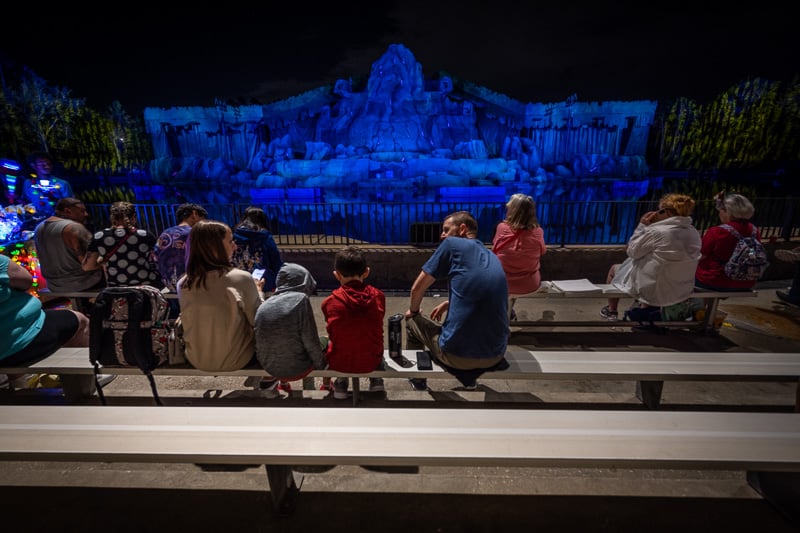

Dining Packages – Packages that include reserved seating for a show, such as Fantasmic or the EPCOT festival concerts and Candlelight Processional, are typically included in the Disney Dining Plan. Here are the official details about using the DDP for Fantasmic Dining Packages:
1 Table-Service meal will be redeemed from the dining plan for each person dining at:
- 50’s Prime Time Café
- Hollywood & Vine
- Mama Melrose’s Ristorante Italiano
- Sci-Fi Dine-In Theater Restaurant
2 Table-Service meals will be redeemed from the dining plan for each person dining at the Hollywood Brown Derby.


The DDP can also be used for EPCOT festival concerts, such as Candlelight Processional Dining Packages. It’s treated as a “Dining Event” or experience. To the best of our knowledge, Walt Disney World doesn’t have any officially published “rules” for using DDP credits on EPCOT Dining Events.
One change that we spotted with Candlelight Processional Dining Packages is that each restaurant is its normal amount of credits on the Disney Dining Plan. This is unlike in the past, when all restaurants required 2 table service credits on the DDP. It’s not yet confirmed whether this will be the case again in 2025 or 2026, but if so, it’s a huge win.
The Candlelight Processional Dining Package is much more valuable than the Fantasmic Dining Package. Both of these include a voucher for guaranteed seating in their respective viewing areas, but Candlelight Processional is much more competitive and “necessary,” whereas Fantasmic has faded in popularity somewhat since its return. Both are great uses of DDP credits, but Candlelight is #1.


Disney Dining Plan Credit Values
DDP credits don’t have a set dollar value, and how much they are “worth” widely varies based upon your dining preferences. For example, a table service credit may be redeemed at an inexpensive restaurant for a water, sandwich, and ice cream dessert that would normally cost $37 total. Alternatively, it can be redeemed at a nicer restaurant for a glass of wine, swordfish steak, and Copetta Sotto Bosco that would normally cost $73 total.
These are actual examples from Walt Disney World restaurants, demonstrating the big difference in value a credit may have depending upon at which restaurant and for which menu items it’s redeemed. You could get even less or even more value out of the Dining Plan, depending upon what you order.
By analyzing pricing, we can reverse engineer an approximate value that Disney places on each meal type within the various DDPs. Based upon our calculations, a table service meal is worth approximately $64.50, a counter service meal on the DDP is worth approximately $26.50, and a snack is worth approximately $6.50. (For the purposes of these calculations, we view the refillable mug as a throw-in, since its value could fluctuate widely depending upon length of stay.)


Those numbers are updated to account for price increases on the 2025 Disney Dining Plan. Honestly, it’s difficult to contort the numbers to make the math work, but the above values are pretty much the only way for the discrepancy between the two tiers to make sense. The result is a slight increase in the value ascribed to snack and counter service credits, and a massive increase for table service credits.
Note that these numbers have not been updated to account for the Free Kids Disney Dining Plan in 2026. That will be impossible, since the value proposition will vary depending upon the number of kids and adults in each party. The analysis is going to become a lot more circumstantial, with the 2026 Disney Dining Plan generally being worth it with even a 2:1 ratio of adults to children.
Even then, a lot will depend upon appetites, whether you drink alcohol, are vegetarians, and more. It’s still possible that the 2026 Disney Dining Plan won’t be “worth it” to kid-centric parties depending upon all of that. Only you know your party and should be able to have a pretty good rough idea of whether the DDP is right for you in 2026.


By comparing those dollar amounts to online menus available for Walt Disney World, you can get a pretty good idea of whether the Disney Dining Plan is right for your family. We write a long review below and also have resources for getting more value out of the Dining Plan, but ultimately it’s a personal thing. With those rough numbers, you can do the math for yourself and make an informed decision as to whether the DDP is right for you.
Spoiler: unless you drink alcohol at almost every meal and order expensive entrees at nice restaurants (but not 2-credit ones!) or do a lot of character dinners (but not breakfasts!), it’s going to be very difficult to make the regular Disney Dining Plan work out in your favor. That’s especially true if your party skews towards adults, rather than kids.
If you want to read more about most common circumstances when the DDP does or does not make sense, see When You Should Buy & Skip the Disney Dining Plan! That’s a long read, but it provides a breakdown of different demographics that likely will–and will not–benefit from buying the DDP. Or you can simply follow the above rule of thumb, which is all ~90% of guests need to know.
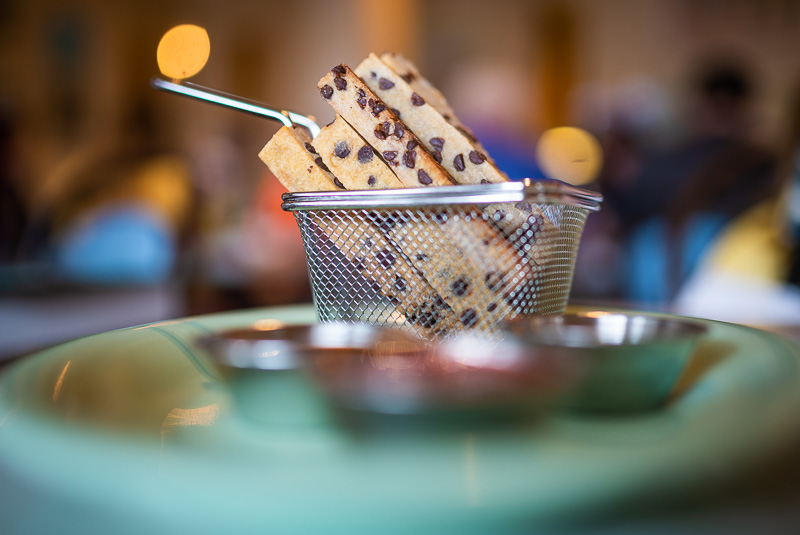

If you’re on the fence as it’s a close call as to whether the Disney Dining Plan is right for you, it is possible to plan ahead to squeeze more bang for your buck out of the DDP. For this, see our popular ‘Value Maximization’ series of posts:
Frequent users of the Disney Dining Plan become pretty adept at getting more bang for their buck, as they know these strategies are the difference between saving hundreds of dollars with the Disney Dining Plan and losing hundreds of dollars with it. With these posts, quick menu review, and some advance planning, first-time visitors to Walt Disney World can also make the most of the Dining Plan!


As noted at the top of the post, the Disney Dining Plan is offered throughout the year for “free” to Walt Disney World guests who purchase a vacation package (this is not offered to Disney Vacation Club members staying on points). Typically, Free Dining is offered for select dates in May through December.
The Free Dining promotion is incredibly popular with Disney fans. However, you need to remember that there’s no such thing as a free lunch. When Free Dining is available, you forfeit another discount that might be offered–like a room-only discount.
You’re also locked-in to buying tickets directly from Disney, which means no discount tickets. Suffice to say, you need to do the math and compare the “Free” Dining Plan to other discounts. We found that the 2025 Free Dining deal was often inferior to an alternative $200 off per night deal and room-only offers. It’ll be interesting to see what changes in 2026 to account for the Free Kids DDP.
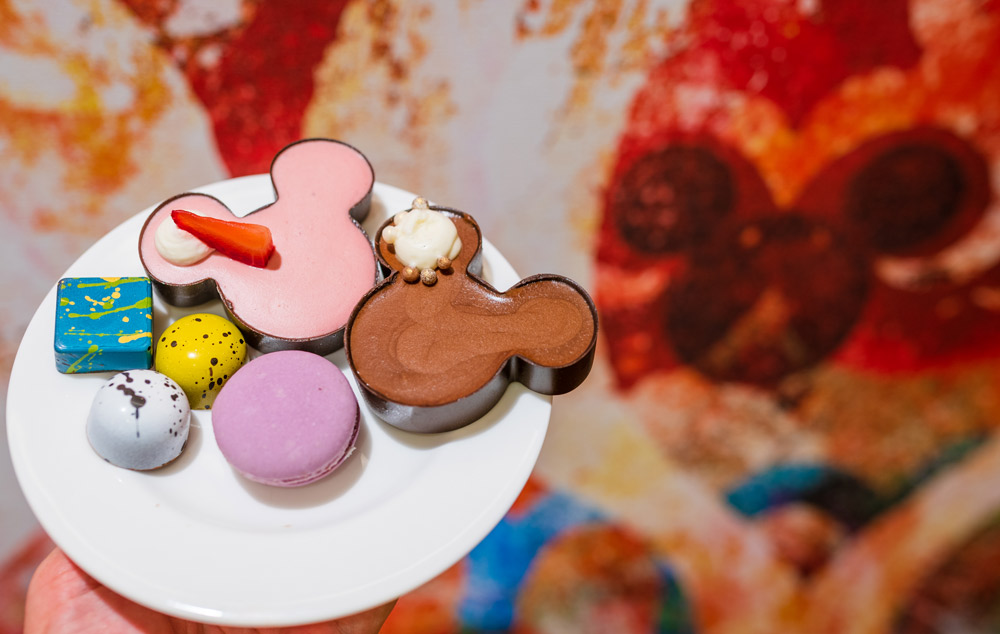

Before even booking the Disney Dining Plan, you should determine where you want to eat and secure Advance Dining Reservations (ADRs). It should be easy to see which Disney Dining Plan best suits your needs, or if the Dining Plan is even necessary.
Even for many on-site Walt Disney World guests, the Dining Plan is not the best option. For example, if you want to splurge and stay Club Level (read our Guide to Club Level & Concierge Lounges at Walt Disney World for more info), it’s not a good fit for you. If you primarily want to indulge in Signature Restaurants or fine dining, the Disney Dining Plan isn’t a good choice. Vegans and vegetarians also will not be well-suited by the Disney Dining Plan. (The list goes on…)
For a simple system, it’s surprisingly complex, so don’t feel bad if it takes some reading before you fully understand how the Disney Dining Plan works and whether it is a good fit for your party. If you only anticipate eating inexpensive meals or want to stay on a tight budget, the Dining Plan probably won’t make a lot of sense. But we’ll get to that…
Is the Disney Dining Plan Worth It? – Pros & Cons
Savings – You can save on the Disney Dining Plan, but you have to be a certain type of eater and not waste any credits. If you are a big eater who likes steak and would like to order it at every meal, you can save money with the Disney Dining Plan. This requires that everyone in your party is a big eater, and that all of you use all of your counter service and snack credits wisely. (See our Worst Snack Credit Uses on the Disney Dining Plan list for more on that.)
If your teens are human garbage disposals and the adults in your party love steak, the Dining Plan can offer some savings. As soon as anyone in your party starts ordering chicken or pasta, those savings disappear to the point that you start losing money on the Disney Dining Plan. No matter what they order, a vegetarian will lose money by using the Disney Dining Plan–without exception.
With the addition of alcohol to the Disney Dining Plan, anyone who enjoys a drink or two per day will also come out ahead. The cost of drinks at Walt Disney World restaurants average around $8-14, which is larger than the price increase of the Dining Plans this year. If you get two glasses of wine per day, you’re looking at around $20-25/person more in value every day.
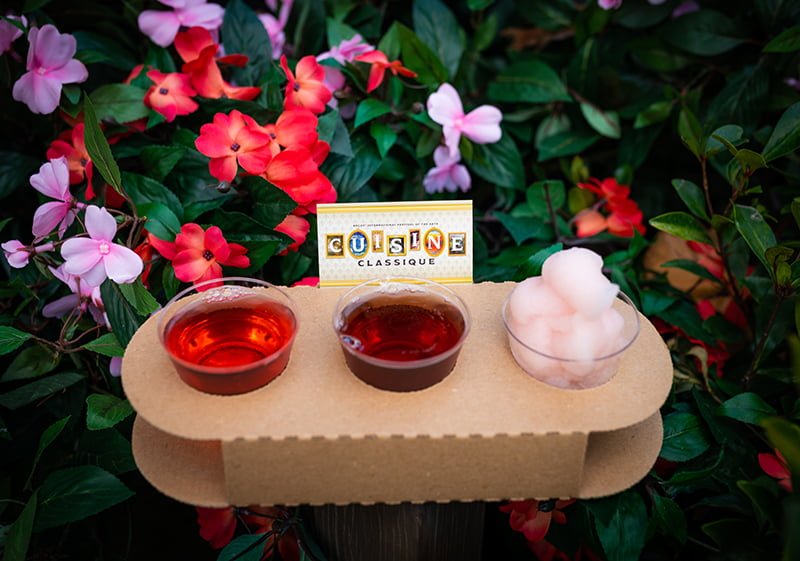

Conversely, if you’re non-drinkers or using the Quick Service Disney Dining Plan and spend most of your time in Magic Kingdom (where alcohol isn’t served at counter service restaurants), you come out behind. Alcohol is the huge new wildcard to the Disney Dining Plan, and can really swing the pendulum of value. Whether that’s in your favor or out of your favor depends almost entirely upon how many alcoholic drinks you enjoy per day.
Speaking of which, the Disney Dining Plan is potentially very valuable for those who visit during Epcot’s International Food & Wine Festival or any other Epcot festival (basically, any month except summer). The good news is that taking advantage of this value does not require drinking–this is all about snacking!
Some of the best snacks at the Epcot festivals can cost as much as $10 and can be purchased using snack credits. We highly recommend stockpiling snack credits and using them during your Epcot days, as not only are these festival snacks a great use of credits, but the Epcot festivals are a ton of fun, and this is a way to avoid the sticker shock of paying out of pocket.
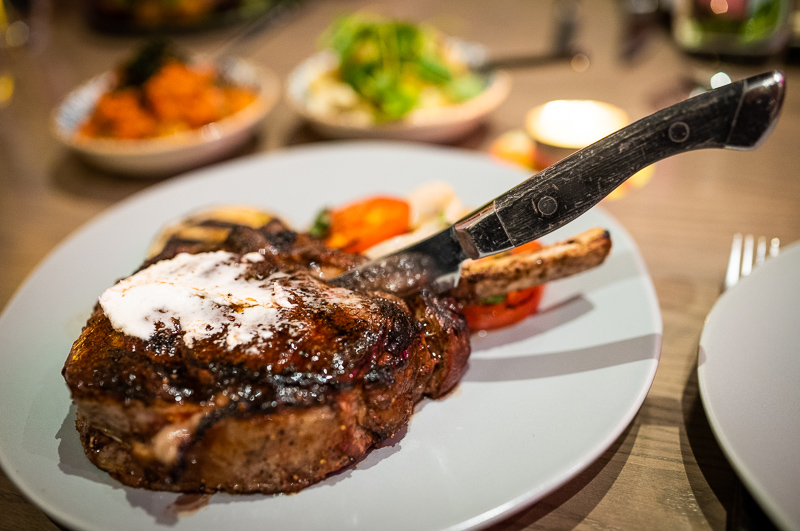

The Deluxe Dining Plan can be utilized well if you follow the strategy of eating breakfast (or an early lunch) at a Table Service restaurant (character breakfasts are great for this) and dinner at a Signature Table Service Restaurant, plus snacks whenever. Read How We Saved 50% on the Deluxe Disney Dining Plan for a specific example of how we’ve leveraged the DxDDP for maximum value!
It’s worth noting that prices have risen dramatically for the Disney Dining Plan since it was introduced, meaning that just because you used it on your last trip ~5 years ago and found it to be a good value, does not mean it’s still a good value. The appetizer and tip were cut ages ago, and prices have increased.
However, the biggest of the price increases occurred a few years ago, and prices have not climbed much since then. It would seem that Walt Disney World has reached its price ceiling (or close to it) with the Disney Dining Plan. Prices are only up slightly, and that has been true of previous years, too. Prior to that, there were some double-digit price spikes.
By contrast, table service menu prices have steadily increased since the introduction of the Disney Dining Plan, and at a higher rate (~15%) than the Disney Dining Plan pricing. This means that the relative value of the Dining Plan versus paying out of pocket actually has improved of late.


Effort – If value is your main concern and you aren’t a steak-addict, it can take a lot of pre-planning to save money by using the Disney Dining Plan. Because the margin of savings can be so low, in many cases the Dining Plan causes guests to order the most expensive item on the menu to get “value” out of the plan.
Same goes for choosing more expensive restaurants. There have times on the Dining Plan when a cheaper menu item sounded good, but there was that lingering thought in the back of my mind that if I didn’t order something more expensive, the Dining Plan would actually cost us more than paying out of pocket.
This blog alone has at least 10 articles about the Disney Dining Plan, and we could probably have another couple dozen and still have people asking us questions. Saving money on the Disney Dining Plan requires a good amount of pre-planning or knowledge of how to work the system if you’re just a normal eater.
It’s good to pre-plan where you want to eat at Walt Disney World regardless of whether you’re on the plan (not all restaurants are equal and you’ll need ADRs for some), so that’s not necessarily a bad thing, but using the Dining Plan increases the amount of pre-planning that’s necessary–if you care about saving money. We’ve found that we normally save more with the Tables in Wonderland card than the Dining Plan, and the former requires no pre-planning maximization effort.
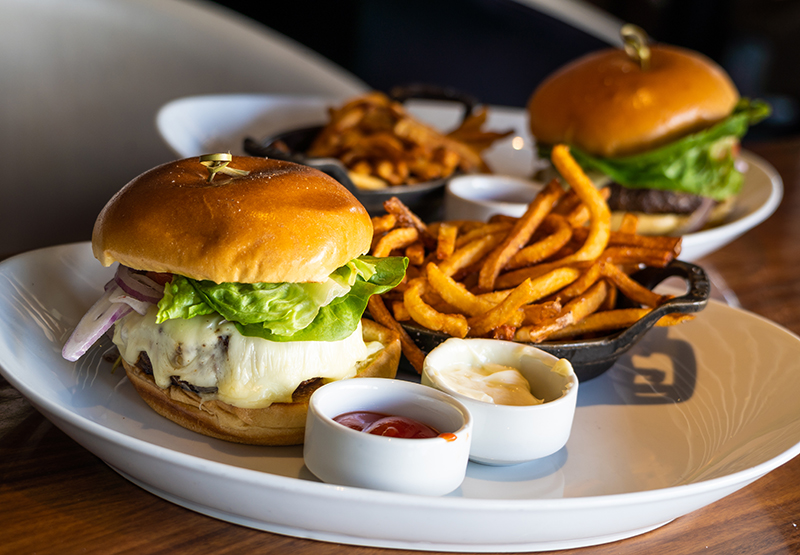

Amount of Food – One common complaint is that the Disney Dining Plan often “forces” guests to eat more than they want. While Sarah and I are both big eaters, at times, the Dining Plan is just too much food. There have been occasions when we otherwise would have eaten small counter service meals, but because we had the credits to use, we have eaten at Table Service restaurants. Not only did this result in over-consumption, but it also burned valuable vacation time.
If you have a short trip and want to experience as many attractions as possible, this is something to keep in mind. While you can get value out of the Disney Dining Plan, that savings requires sitting down for longer meals and eating a lot of food. If you don’t normally eat as much food as the DDP provides, you aren’t actually saving money–the savings are illusory. You’re over-consuming in the name of (false) savings.
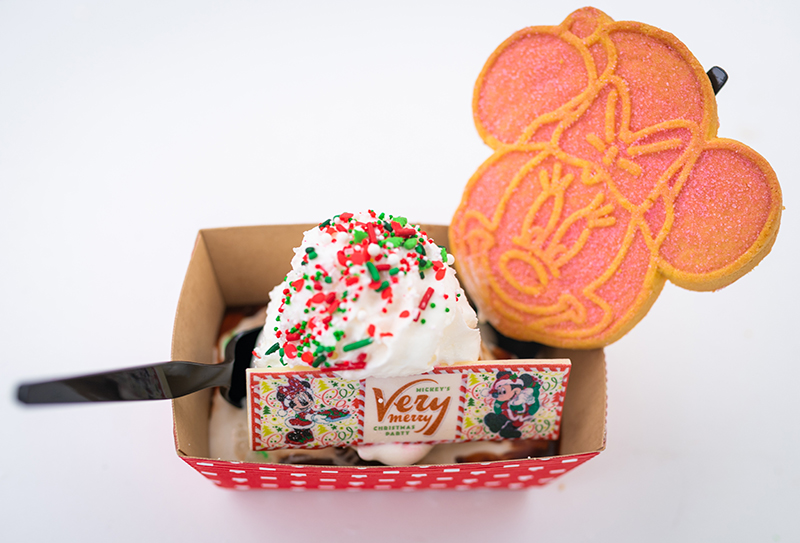

Convenience – Many visitors argue that the Disney Dining Plan is about convenience. We contend that it is not convenient. In terms of convenience, look at it this way: you’re reading an in-depth article about using the Disney Dining Plan, and you’ll probably read other such articles.
How many articles have you read titled “Paying for Meals with Cash Info & Tips”? Hopefully none. A convoluted credit system cannot possibly be more convenient than the universal standard of paying money for a billed amount. It just can’t.
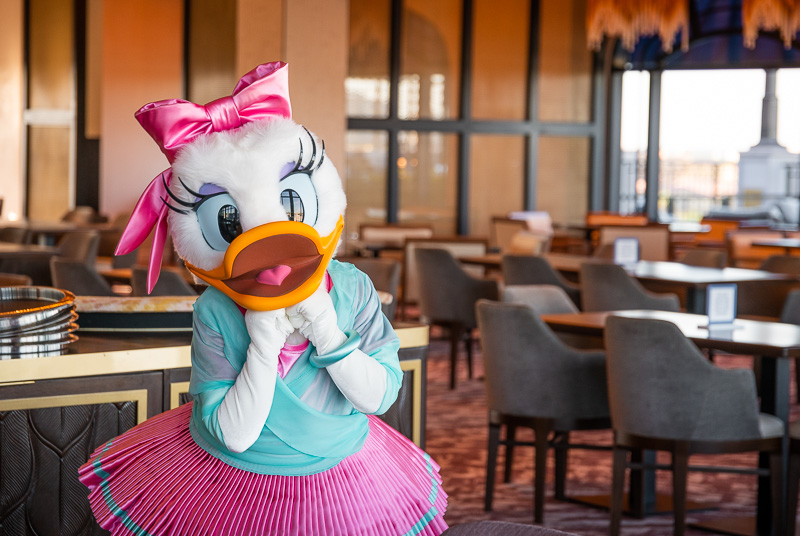

Budgeting – This is probably the most contentious point. In addition to supposedly being convenient, a lot of its fans advocate the Disney Dining Plan because it helps them stay on a budget and avoid thinking about money on vacation. Again, this doesn’t pass the smell test.
In most cases, when people try to stay on a vacation budget, it’s because there is a need for that budget. Overspending might cause financial strain. Viewed in that light, the Disney Dining Plan doesn’t help with a budget, it helps with predictability. Meals cost the same amount every night, regardless of what’s consumed.
If you’re on a tight budget and you’d normally spend $35 per person per night on food if you paid out of pocket, but you end up spending ~$60+ per person per night on food with the DDP, isn’t that predictability doing you more harm than good?
The Disney Dining Plan allows you to fall back on this predictability and ‘turn off’ your brain with regard to how much dining costs on vacation. If you don’t want to worry about money, purchase (discounted!) Disney Gift Cards before the trip. While we don’t advocate making that psychological disconnect between actual and “fake” money, if you really don’t want to think about money, go that route.
We will be blunt: if you are too lazy to make a dining budget before your trip, chances are you’re too lazy to figure out where to dine to maximize your value. Given that, you’ll probably end up saving more money with the gift card method.
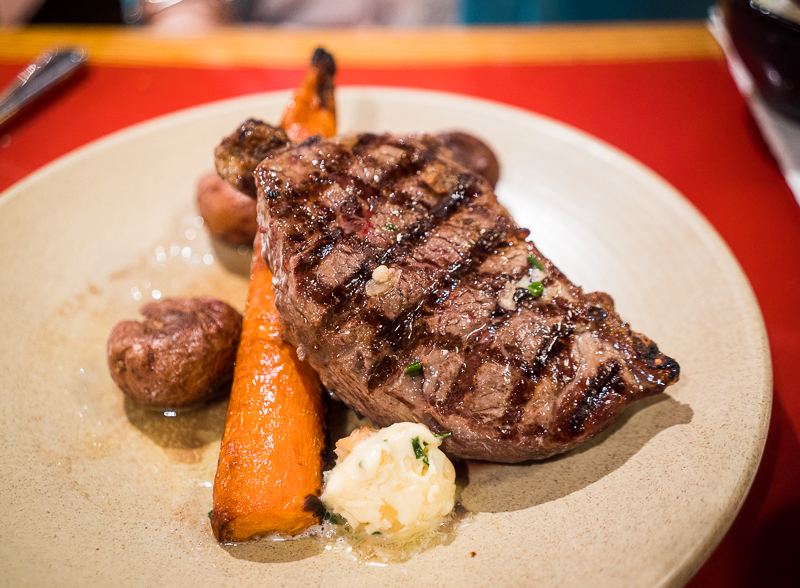

Sticker Shock – Even if you’re not on a tight budget, menu prices at Walt Disney World can be a bit…shocking. The psychological disconnect we mentioned above isn’t always a bad thing, particularly if you want to splurge or have financial means, but can’t bring yourself to order certain items when directly paying menu prices.
The Disney Dining Plan won’t scare you away from expensive menu items. If you love filet mignon, but would shy away from ordering it upon seeing the menu price, the Disney Dining Plan might be for you. However, you might have some sticker shock when you see the nightly prices of the Dining Plan, in the first place…
Conclusion
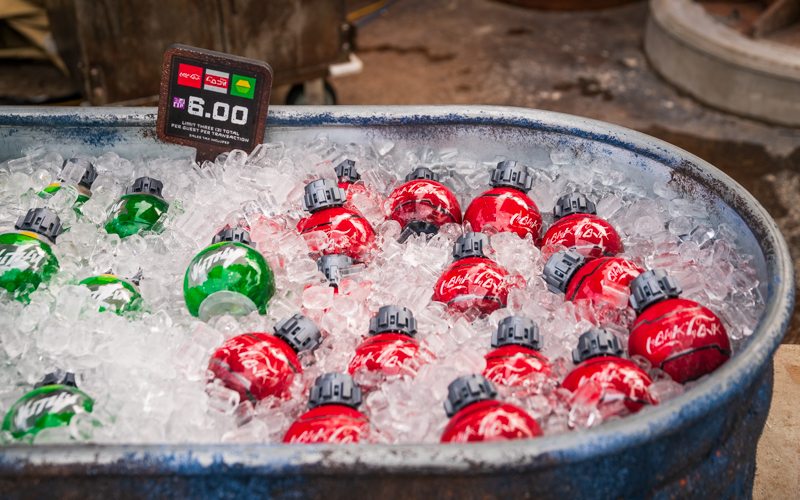

Overall, whether the Disney Dining Plan is right for you is a personal decision based on a lot of variables. We estimate that for the majority of guests, it is not a good value. This doesn’t mean it’s not a good product, as it will offer monetary savings for some families, and psychological comfort for plenty of others. I can’t say whether the DDP is right for your particular circumstances, but hopefully the considerations above can help with your decision. If you use the Disney Dining Plan for your vacation, make sure you do your homework and plan accordingly!
If you are still unsure of whether the Disney Dining Plan might be right for you—or need personalized help with any aspect of your trip from hotels to the DDP and more—we recommend contacting a no fee “Authorized Disney Vacation Planner” (basically, Disney’s term for a travel agent) to get a quote and to help you plan. They get their commission from Disney, so none of the authorized (key word) planners will charge you for booking their trip and helping. Here’s one such recommended Authorized Disney Vacation Planner.
With regard to the Disney Dining Plan and restaurants in general, this article is just a jumping off point. First-time Walt Disney World visitors often underestimate the importance of planning (especially for restaurants, many of which are booked solid months in advance) and have a bad time because they didn’t plan enough. Want more dining recommendations? Check out our Walt Disney World Restaurant Reviews. For info on whether the DDP is right for you, read our Ultimate Guide to the Disney Dining Plan. For comprehensive vacation advice, the best place to start is our Walt Disney World Trip Planning Guide for everything you need to know!
Your Thoughts
What is your experience with the Disney Dining Plan? Thinking about buying the 2026 Disney Dining Plan? Does the DDP work for you? Is it a bad fit for your family? Do you agree or disagree with our assessment? Any questions? Hearing your feedback–even when you disagree with us–is both interesting to us and helpful to other readers, so please share your thoughts below in the comments!

